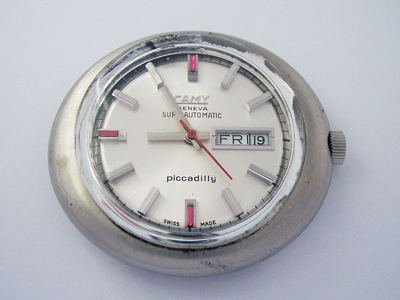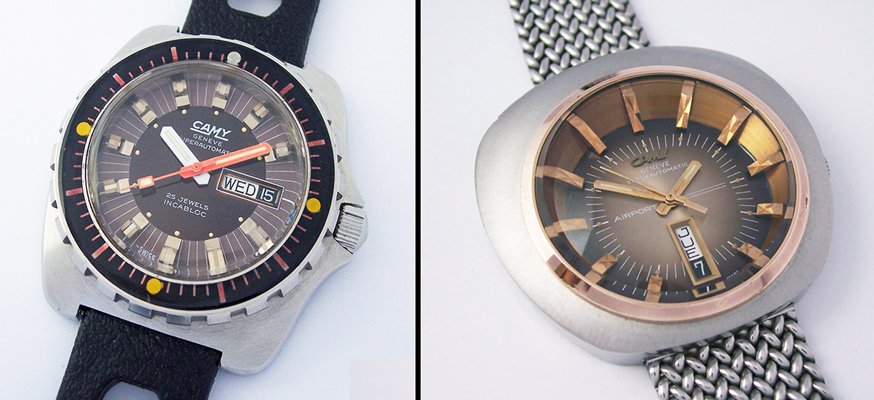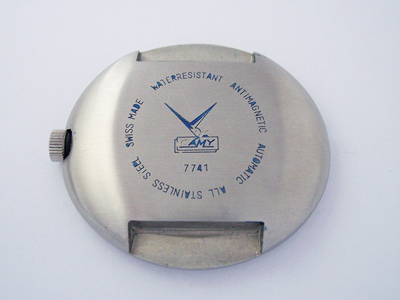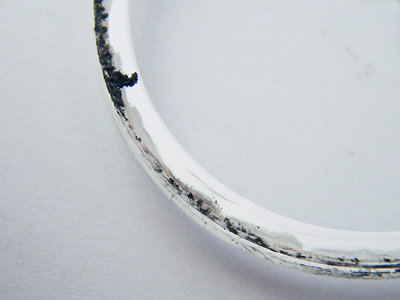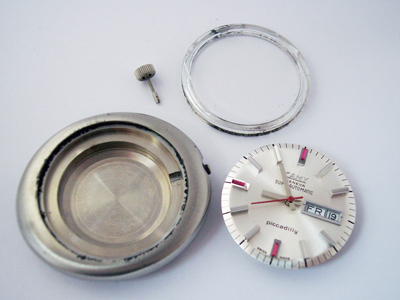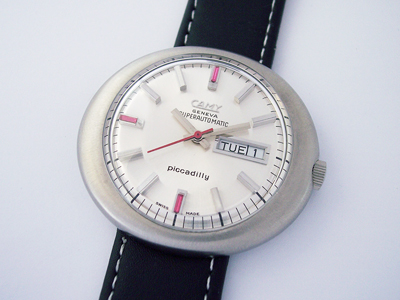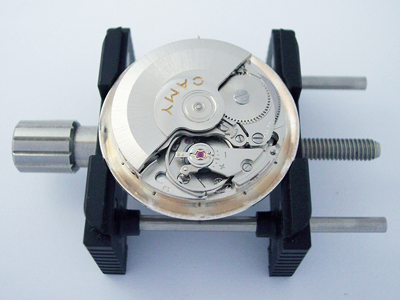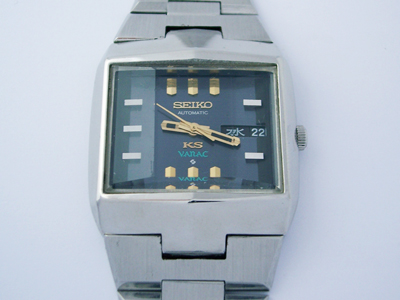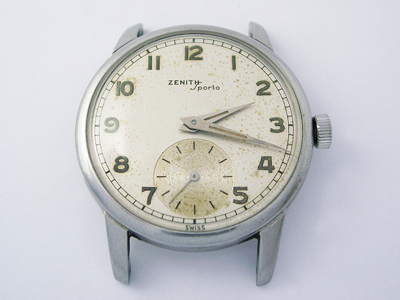When it comes to watch design, did they have all the fun in the 1970’s? Here’s another beauty from that era, the Camy Superautomatic Piccadilly.
(Click pictures to enlarge)
Though not what you’d consider a ‘household name’ in collector circles, vintage Camy watches have a growing fan base and certain models are sought after, typically for their quirky nature. I’ve written about two other Camy models from the Superautomatic range previously on the blog, the Superautomatic Diver and the Superautomatic Airport, neither of which could be considered shrinking violets.
The Piccadilly is another model with it’s own character. Reminiscent of the Omega Dynamic, the brushed, all stainless steel case is not exactly small at 43mm (excluding the crown) by 40mm, though it does wear much smaller due to the lack of lugs. The lug width is a standard 20mm, so offers many strap and bracelet options.
The watch arrived in near perfect condition (apart from the crystal obviously!), the dial and hands were flawless – note the baton jewels on the 6,9 and 12 hour markers, and the case still had its original protective blue wax in the engravings from when it was made – a true NOS (new old stock) survivor.
As you can see above, this is another Superautomatic model with a one-piece case, so having no separate caseback, the crystal has to be removed first to gain access to the movement… and that was where the real fun started. Yet another battle with a tricky case!
Though it’s not immediately obvious in the first picture, rather than having a traditional tension ring, the crystal is held in place on this model by a separate gasket between the case and crystal, the crystal rim having a silver coating on the underside to provide contrast against the dial.
Unfortunately, after such a long time dormant, the gasket had completely emulsified, effectively gluing the crystal into the case. None of the tools, pumps or clamps I have in my arsenal to get into one-piece cases were able to dislodge it. Being so close to the dial and hands, using any kind of solvent to try and dilute the gasket mess wasn’t an option, so eventually I had to squeeze the crystal with the crystal claw tool until it broke to get it out. Ooof! Not something that I’d want to repeat in a hurry, especially given the pristine dial and hands.
You can see on the underside of the crystal that the silver coating had been eaten away by the gasket residue, creating the mottled effect, so the original crystal was beyond saving anyway.
With that nightmare out of the way, the split stem was separated and the watch could finally be removed from the case.
The previous Superautomatic models I’ve had on the bench and all the others I’ve seen have all had ETA calibres, so I was surprised to find an A. Schild calibre inside this one. The A. Schild cal. 1886 is a 21,600 bph, day/date calibre with a limited quickset and was available in 17, 21 or 25 jewels formats – the top-spec, 25 jewel version in this case. As you would expect from a NOS movement, it only needed a routine service to remove and refresh the oils and greases to put things right.
There was no way that I could source a genuine replacement crystal and gasket for this model, so I fitted a diver’s tension ring crystal instead, which worked well and will make it much easier to access the case the next time a service is due.
Rich.
** Many thanks to Justin Mueller for letting me feature his watch on the blog. **

